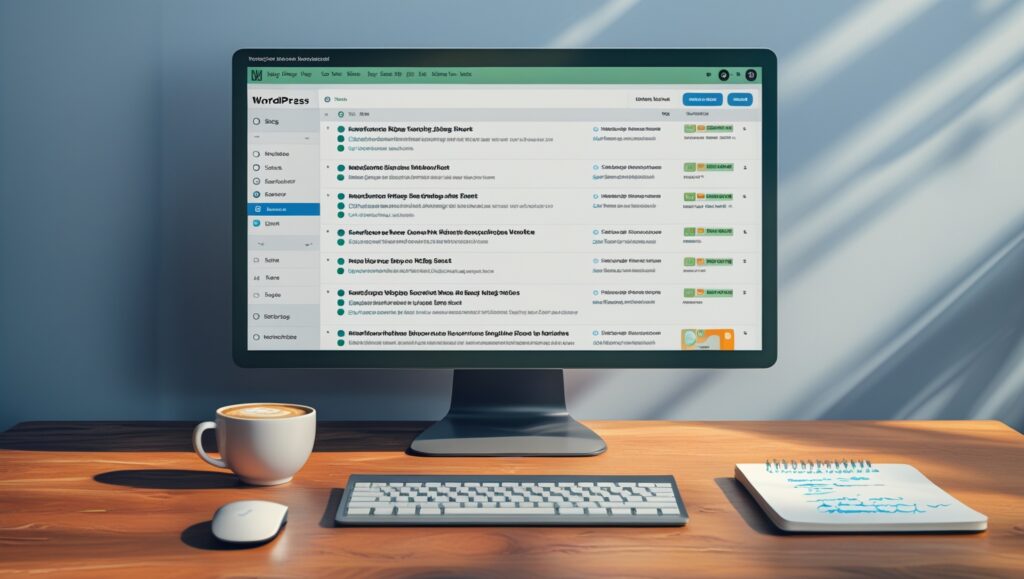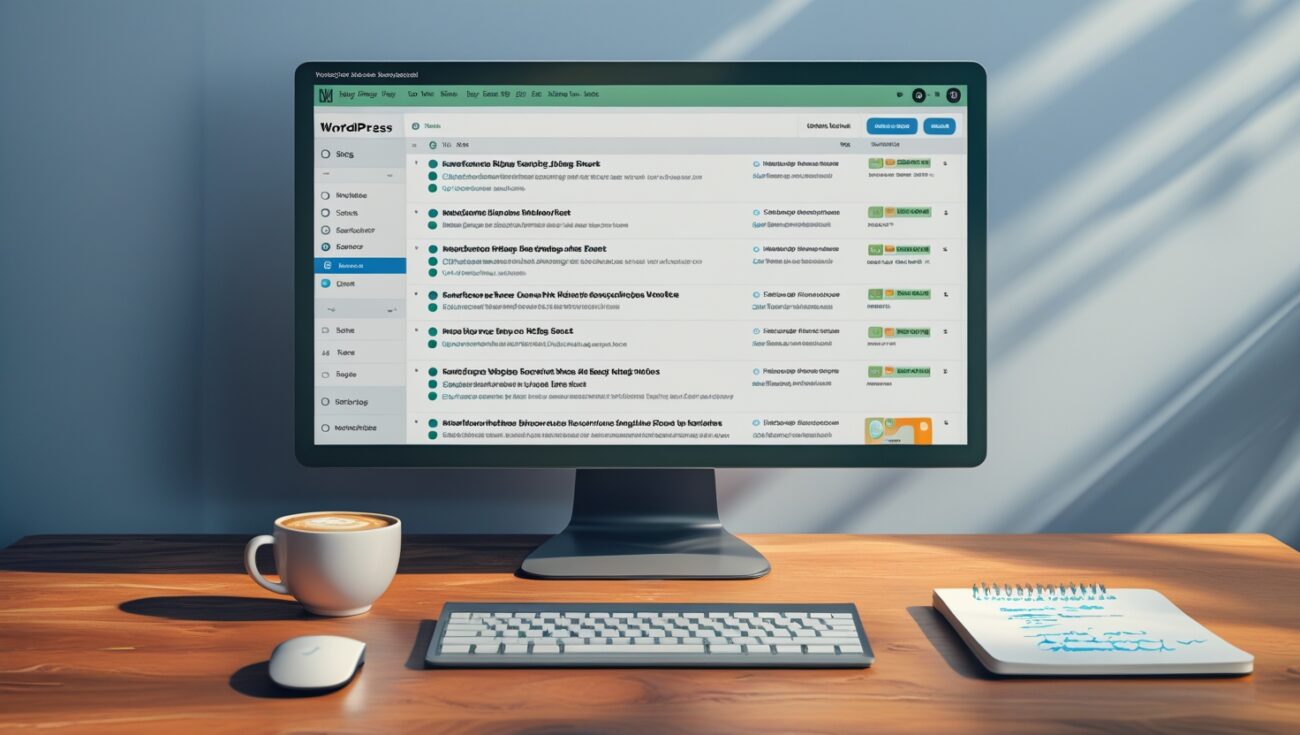Internal Linking Best Practices for WordPress Blogs
Learn the best practices for internal linking on WordPress blogs to improve SEO, boost rankings, and enhance user experience. Discover automation tips with Linkbot.

Table of Contents
When I first started blogging, internal linking felt like a minor detail. I would occasionally link to older posts, but I didn’t realize how much it could impact SEO and user experience. Over time, I learned that strategic internal linking is one of the most powerful ways to improve rankings on Google.
After testing several approaches, I’ve developed a set of best practices for WordPress blogs that help me consistently boost traffic, retain visitors, and make sure no post is left behind.
Link to Relevant Content Only
Not every page deserves a link from every post. I make sure the links I add are contextually relevant to the reader. For example, a post about “blogging tips” might link to “SEO strategies for beginners,” but not to unrelated content.
Automation tools like Linkbot help me find relevant internal links without wasting time searching manually.
How I Automate Internal Linking in WordPress (and Why It Boosted My SEO Overnight)
When I first learned about internal linking in WordPress, I used to do it all manually. I’d go through each post, find related content, and add links by hand. It was exhausting. If you’ve ever wondered how to add internal links in WordPress or how to link to internal pages in WordPress, you already know it’s not fun when your site starts growing.
That’s when I started looking for an easier way — a plugin that could automate internal linking without breaking my SEO or slowing down my site. I came across a few popular names like “Link Whisper,” but after testing them, I wanted something smarter, cleaner, and actually beginner-friendly. That’s how I discovered Linkbot — and it’s easily the best solution I’ve used for WordPress automated internal linking.
Now, instead of spending hours doing this manually, I let Linkbot handle everything. It automatically builds WordPress internal links, gives me link suggestions, and even tracks how well those links perform over time. It’s like having your own SEO assistant running in the background.
If you’re still figuring out how to make internal links in WordPress, you’ll love how simple it is. With Linkbot, you just install it, connect your site, and it starts mapping out your internal links automatically. You can even view your WordPress link to internal pages visually — which helps you see how your site structure flows.
Use Descriptive, Keyword-Rich Anchor Text
Google relies on anchor text to understand what the linked page is about. I always try to use descriptive phrases rather than vague words like “click here.”
With Linkbot, keyword-rich anchors are automatically applied, making it easier to maintain SEO consistency across dozens of posts.
Link to New Content from High-Authority Pages
Whenever I publish a new blog post, I make sure to link it from older pages that already perform well in Google. These pages pass authority and help the new post rank faster.
Automating this process with Linkbot ensures that every new post is linked from the most relevant pages without manual effort.
From an SEO perspective, the impact is real. Strong WordPress SEO internal links tell Google which pages are important, help users navigate better, and keep visitors on your site longer. When I started using Linkbot for automated internal links, I noticed my rankings and crawl rates improved within weeks.
If you’re a beginner, don’t worry — Linkbot is built for you too. It’s a great for beginners WordPress internal linking tool because it does the heavy lifting automatically while letting you stay in control. You can choose anchor text preferences, review link placements, and manage your internal linking automation easily from the dashboard.
And unlike older tools such as “Link Whisper,” Linkbot doesn’t clutter your workflow. It’s the best WordPress automated internal linking tool I’ve found — ideal for bloggers, marketers, or anyone serious about SEO internal links WordPress optimization.
Whether you’re searching for a guide to WordPress internal linking, want to learn how to automate internal linking, or just need the easiest WordPress internal link suggestion tool, I highly recommend giving Linkbot a try. Once you see how much time it saves, you’ll never go back to manual linking again.
Avoid Overlinking
Too many links can confuse readers and dilute link equity. I keep the number of links per page reasonable and focus on quality over quantity.
Tools like Linkbot make smart suggestions, so I don’t end up adding unnecessary or repetitive links.
Update Internal Links Regularly
Old posts often need links to new content. I schedule regular reviews to make sure my internal linking network stays fresh and complete.
Linkbot automates this for me, scanning my entire site and adding links to new posts where appropriate. This keeps my content ecosystem strong without extra work.
Organize Content Into Clusters
I organize related posts into topic clusters or content hubs. This not only improves SEO but also helps readers explore topics in depth.
Linkbot supports this approach by automatically connecting related posts, making content clusters effortless to maintain.
Check for Orphan Pages
Orphan pages—posts without any internal links pointing to them—rarely get traffic. I regularly use tools to identify these pages and make sure they’re linked from other posts.
With Linkbot, orphan pages are automatically discovered and linked, giving every post a chance to rank.
Consider User Experience
Internal links aren’t just for SEO—they guide your visitors to related content. A good linking structure keeps readers engaged, reduces bounce rates, and increases conversions.
Linkbot helps me maintain a logical navigation path, making it easier for users to find content they’re interested in.
Prioritize Mobile Navigation
With mobile users in mind, I make sure links are easy to click and guide visitors naturally through my site.
Automation ensures mobile-friendly linking, so visitors on smaller screens get the same smooth navigation experience as desktop users.
Monitor Link Performance
I track which internal links get clicks and which pages benefit most from link equity. This data helps me optimize linking patterns over time.
Using Linkbot gives me automated suggestions based on relevance, helping improve both SEO and user engagement metrics.
Final Thoughts
Implementing internal linking best practices has transformed my WordPress blog. Not only do I rank better, but visitors also spend more time exploring my content.
If you want to automate the process and ensure every page is linked effectively, click here to try Linkbot. It’s the tool I personally rely on to save time, improve SEO, and keep my WordPress blogs organized and fully optimized.
Internal linking isn’t just about SEO — it also shapes how readers navigate your site. Before I automated this process, I often missed linking older posts, which left valuable content hidden. With Linkbot, every post is connected naturally, improving rankings and user experience.
One huge benefit of internal linking is faster indexing. When Google sees new posts linked from older, high-authority pages, they get discovered and indexed more quickly. Using Linkbot ensures that new content doesn’t stay buried.
Anchor text is critical. Descriptive, keyword-rich anchors tell search engines exactly what the linked page is about. I rely on Linkbot to automatically match relevant keywords to links, so I never miss an optimization opportunity.
Orphan pages are a silent SEO killer. Posts without links pointing to them rarely get traffic. Linkbot scans for these pages and inserts links where needed, giving every post a chance to rank.
Automation also saves a lot of time. Manually reviewing dozens or hundreds of posts to add links can take hours each month. Linkbot handles this automatically, letting me focus on creating new content.
Internal linking helps distribute link equity. High-authority pages can pass ranking power to weaker or newer posts through internal links. Linkbot ensures this happens naturally, boosting rankings site-wide.
User engagement improves when internal links are used strategically. Readers can explore related content easily, which reduces bounce rate and increases time on site. I’ve seen engagement metrics improve significantly after using Linkbot.
Content clusters or topic hubs benefit greatly from internal linking. Linking related posts together signals to Google that your site is an authority on a subject. Linkbot automates this, keeping clusters organized and connected.
Updating older content with links to newer posts keeps your site fresh in Google’s eyes. I don’t have to manually track everything — Linkbot continuously scans and updates links, ensuring nothing gets left behind.
Internal linking also enhances mobile SEO. Mobile users scroll quickly, and well-placed links guide them through your content seamlessly. Automated linking ensures a consistent experience across devices.
For e-commerce or affiliate blogs, internal links can increase conversions. Linking relevant products or guides encourages readers to explore more and take action. Linkbot automates this process, driving traffic and potential sales.
Finally, automating internal linking with Linkbot gives me peace of mind. I know my WordPress blogs are fully optimized, every post is connected, and my SEO efforts are working efficiently without constant manual effort.

